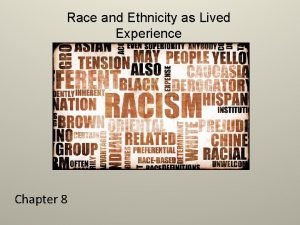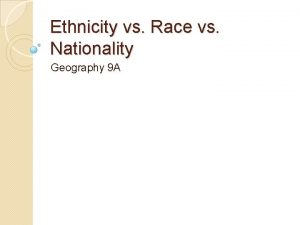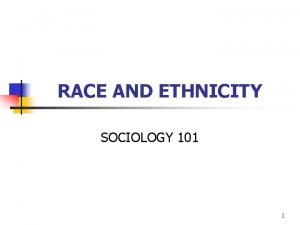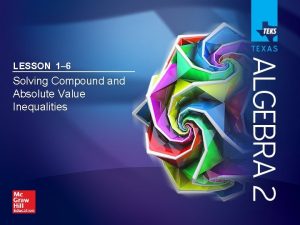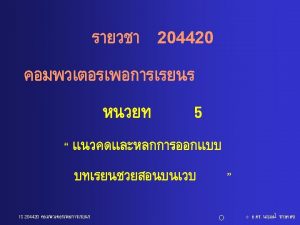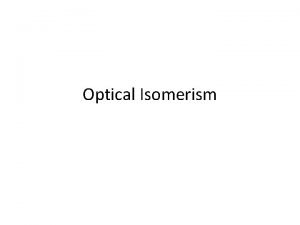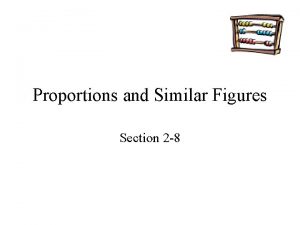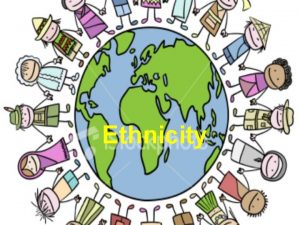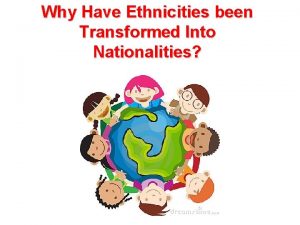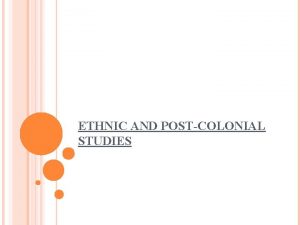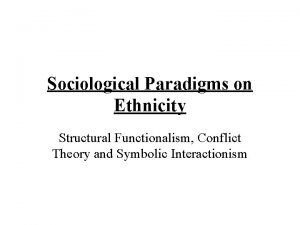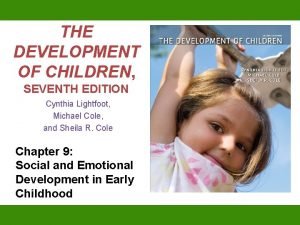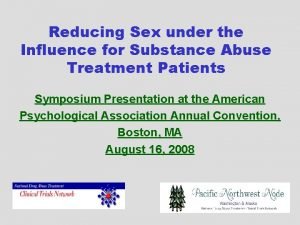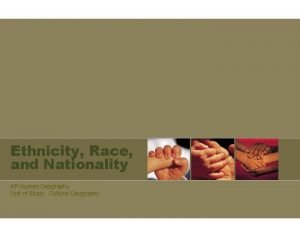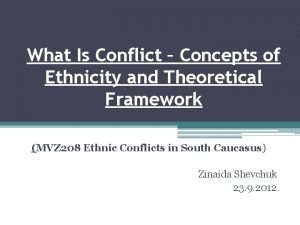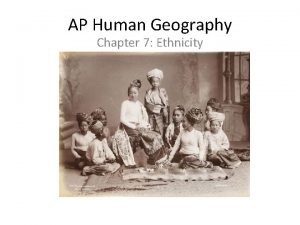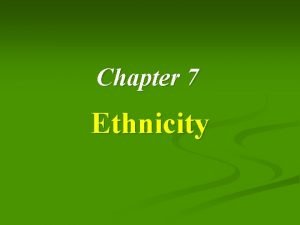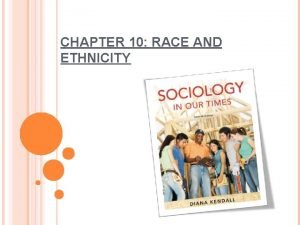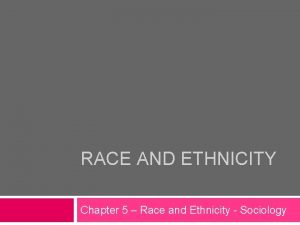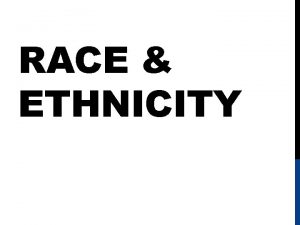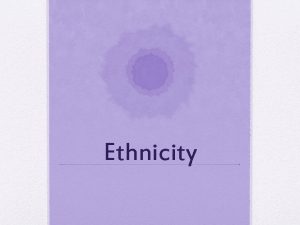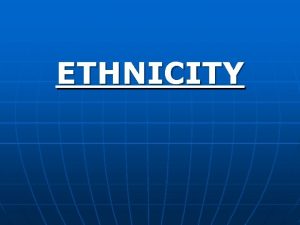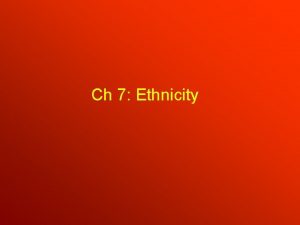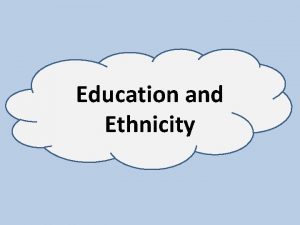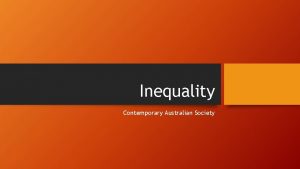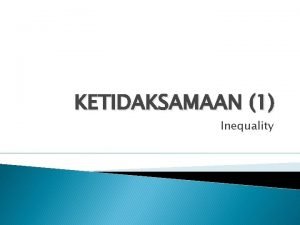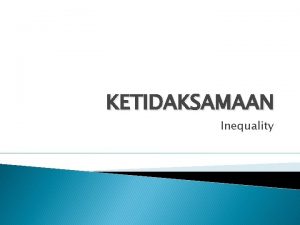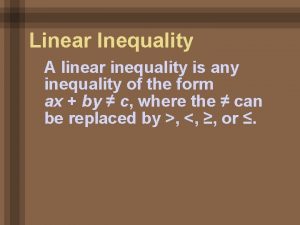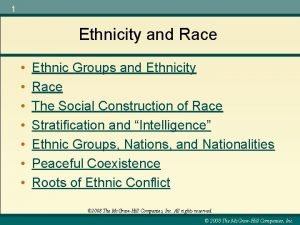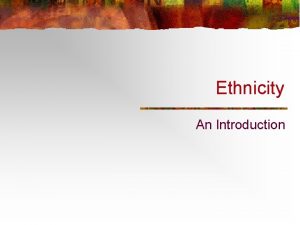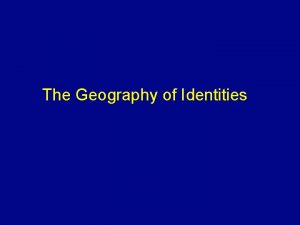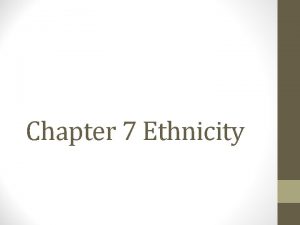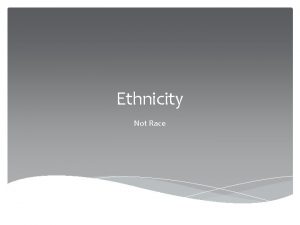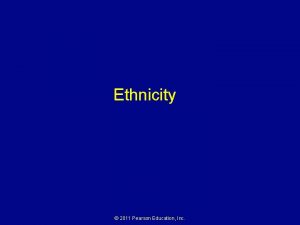Race Ethnicity Inequality Arent Race Ethnicity the same




























- Slides: 28

Race, Ethnicity & Inequality

Aren’t Race & Ethnicity the same thing?

Ethnicity • People who identify with one another on the basis of common ancestry & cultural heritage.

Race • A category of people who are alleged to share certain biologically inherited physical characteristics that are considered socially important within a society. – Shepard

Racial Categories Change Through Time & From Culture to Culture

The problems with continuing Woods says he’s Cablinasian • People of mixed racial/ethnic heritage – Since gene flow is open we can have offspring with any number of racial/ethnic combinations and it/we haven’t created any new races – by recognizing only one, we dismiss their full heritage http: //www. tigerwoods. com/splash. sps

The Great Racial Myth? • Slightly over half of all biological/physical anthropologists today believe in the traditional view that human races are biologically valid and real. • The other half believes that the traditional racial categories for humankind are arbitrary and meaningless, – or that at a minimum there are better ways to look at human variation than through the "racial lens. " http: //www. pbs. org/wgbh/nova/first/gill. html

Dr. George Gill “I have found that forensic anthropologists attain a high degree of accuracy in determining geographic racial affinities by utilizing both new and traditional methods of bone analysis. “ Dr. George W. Gill is a professor of anthropology at the University of Wyoming. He also serves as the forensic anthropologist for Wyoming lawenforcement agencies and the Wyoming State Crime Laboratory. http: //www. pbs. org/wgbh/nova/first/gill. html

Dr. C. Loring Brace “…there is no "biological entity that warrants the term 'race'. ” Dr. C. Loring Brace is professor anthropology and curator of biological anthropology at the Museum of Anthropology, University of Michigan, Ann Arbor “…it is perfectly true that the long-term residents of the various parts of the world have patterns of features that we can easily identify as characteristic of the areas from which they come. ” http: //www. pbs. org/wgbh/nova/first/brace. html

DNA • Researchers have unanimously declared there is only one race — the human race. – New York Times “Do Races Differ? Not Really, DNA Shows. • 99. 9 percent of the human genome is the same in everyone regardless of race. • The standard labels used to distinguish people by ‘race’ have little or no biological meaning. – New York Times “Do Races Differ? Not Really, DNA Shows. http: //www. policyreview. org/DEC 01/satel. html

What we view as race may be an evolutionary response to the environment. • Morphological characteristics, however, like skin color, hair form, bone traits, eyes, and lips tend to follow geographic boundaries coinciding often with climatic zones. – For example, more prominent noses humidify air better. http: //www. pbs. org/wgbh/nova/first/gill. html


The Idea of Race is Real • “If people define situations as real, they are real in their consequences. ” – W. I. & D. S. Thomas in Essentials of Sociology • and the consequences can be devastating…

Genocide and Ethnic Cleansing • The Holocaust • Darfur Catastrophe • 80, 000 people have died in Darfur, 30, 000 have been murdered, 50, 00 have died from disease and famine” – http: //www. americanprogress. org/site/pp. asp? c=bi. JRJ 8 OVF&b=84769 http: //www. shamash. org/holocaust/photos/index. shtml

• 95% of all Native Americans died due to destroyed food supply, disease & murder. – Essentials of Sociology, Henslin • Manifest Destiny (mid 1800 s)

• • Slavery Lynching Segregation Discrimination http: //www. english. uiuc. edu/maps/poets/g_l/lynching. htm

Minority & Dominant Groups • Minority group – “People who are singled out for unequal treatment and who regard themselves as objects of collective discrimination. ” – Not based solely on quantity • Dominant group – “Have greater power, privileges and social status”. Essentials of Sociology, Henslin

Prejudice & Discrimination • Prejudice is an attitude, either positive or negative, which prejudges a person who belongs to a particular group. • Discrimination is an action, “unfair treatment directed against someone”. • One can exist with or without the other Essentials of Sociology, Henslin

Merton’s Typology of Prejudice and Discrimination • Unprejudiced nondiscriminator • Unprejudiced discriminator • Prejudice nondiscriminator • Prejudice discriminator

Global Patterns of Racial-Ethnic Relations • I. Genocide – “A systematic annihilation or attempted annihilation of a people based on their presumed race or ethnic group” • II. Ethnic Cleansing – “A policy of population elimination, including forcible expulsion and genocide” Essentials of Sociology, Heslin

• III. Population Transfer – Indirect population transfer • “Achieved by making life so horrible for a members of a minority group that they leave ‘voluntarily’. ” • Jews in czarist Russia – Direct population transfer • “A dominant group expels a minority. ” • Native Americans Essentials of Sociology, Henslin

• IV. Internal Colonialism – “The policy of economically exploiting minority groups” – Slavery in U. S. – Apartheid in South Africa • V. Segregation – “The formal separation of racial or ethnic groups” – The U. S. South until 1960 s Essentials of Sociology, Henslin

VI. Assimilation • “Minority group is absorbed into the mainstream culture. ” – Forced assimilation • The dominant group refuses to allow the minority group to practice its own religion, speak its language or follow its customs. ” – Permissible assimilation • Dominant group “allows the minority to adopt the dominant group’s patterns in its own way and at its own speed. ” Essentials of Sociology, Henslin

VII. Multiculturalism/Pluralism • “Permits or even encourages racial and ethnic variations” Essentials of Sociology, Henslin

The United States Are we really a melting pot?

Or are we a tossed salad?

Which box do I check? • “Race became a factor in the census during slavery when five blacks were counted the same as three whites to determine how many representatives a state could send to Congress!” – Essential of Sociology, Henslin

Whose business is it anyway? • The problems with not continuing to ask about race/ethnic heritage – can’t identify which groups need help – Most people of mixed racial/ethnic heritage identify with one race more than another • Most are treated as if they belonged to a single racial category
 But these girls arent
But these girls arent Parents' pronunciation
Parents' pronunciation Nothing is ready question tag
Nothing is ready question tag Chapter 8: race and ethnicity as lived experience
Chapter 8: race and ethnicity as lived experience Race vs ethnicity vs nationality
Race vs ethnicity vs nationality Definition of race and ethnicity
Definition of race and ethnicity Lesson 1-6 solving compound and absolute value inequalities
Lesson 1-6 solving compound and absolute value inequalities Data race vs race condition
Data race vs race condition Mechanical efficiency of turbine
Mechanical efficiency of turbine Design of dams
Design of dams The same area at the same time
The same area at the same time Cis trans vs e z
Cis trans vs e z Same place same passion
Same place same passion Similar figures have the same but not necessarily the same
Similar figures have the same but not necessarily the same Proportions and similar figures
Proportions and similar figures Taylor swift's blood type
Taylor swift's blood type Bitwit ethnicity
Bitwit ethnicity Lactose intolerance by ethnicity
Lactose intolerance by ethnicity Countries and nationalities
Countries and nationalities Tower hamlets ethnicity
Tower hamlets ethnicity Ethnicity in postcolonial literature
Ethnicity in postcolonial literature Structural functionalism
Structural functionalism Gordon lightfoot ethnicity
Gordon lightfoot ethnicity Is hispanic an ethnicity
Is hispanic an ethnicity Nationality ap human geography
Nationality ap human geography What is ethnicity
What is ethnicity Blockbusting ap human geography
Blockbusting ap human geography Multinational state
Multinational state Avian ku ethnicity
Avian ku ethnicity



